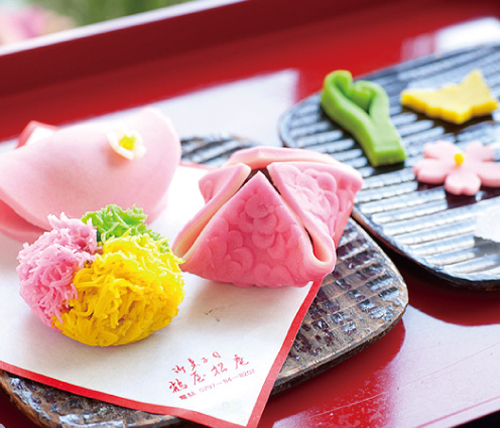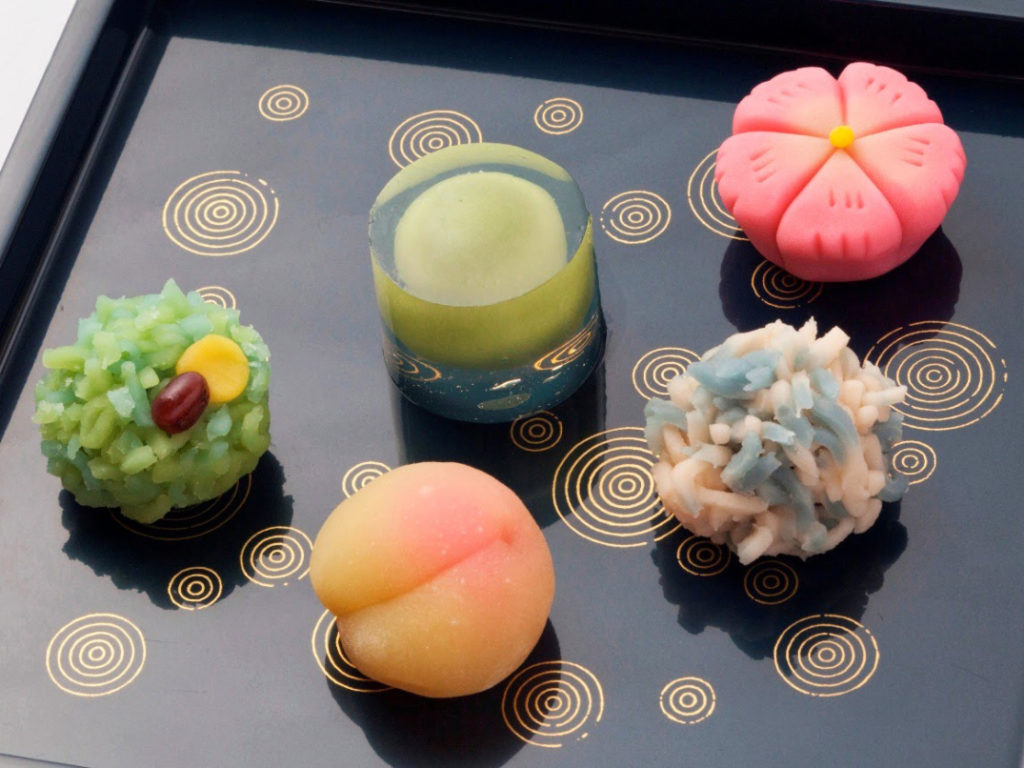
Wagashi has the Kanji name which is the beauty of nature. Therefore each wagashi is like a small universe summing up the beautiful elements in the sky: Cake dough is often dyed according to the seasons, the shape of the cake varies with the natural images ( cherry blossoms, apricot flowers, maple leaves, snowflakes …) and especially the cake of red bean represents the person standing in the center. With the deep meaning of Eastern philosophy hidden in each small dish, wagashi becomes a typical and proud culinary art of Japanese people.
Wagashi cakes are divided into 3 main groups, the classification based on the humidity of the cake or the method of making the cake.
The moisture content of the cake is a very important factor that determines the “shelf life” of the cake.
Namagashi: is a fresh cake, with moisture above 30%
Han namagash: cakes with moisture 10-30%
Higashi: dry crackers with moisture content below 10%
If you divide it by baking method, wagashi for example has the following types:
Mushi mono: steamed buns
Yaki mono: scones
Nagashi mono: jelly-shaped cake
Neri mono: hand-kneaded cake
Uchi mono: molded cake
To fully appreciate the wagashi, we must enjoy it with all five senses: seeing with the eyes, smelling with the nose, “hearing with the ears”, touching with our hands, then coming to taste by mouth.
Why say enjoying wagashi can be heard by ear, that’s because the cake can be named after a symbol, a beautiful natural phenomenon of each season, or named after the lyrics in poetry and music.

When listening to those poetic names, people who enjoy the cake will be able to use their imagination to paint the picturesque natural scenes.
The taste of wagashi should not be too sweet or too light, but must be a balance, harmony. Red bean (azuki beans) is one of the main ingredients of wagashi cakes, in addition to wheat flour, rice flour, sesame, taro, sugar, jelly (kanten).
So wagashi is not only delicious but also a healthy cake.